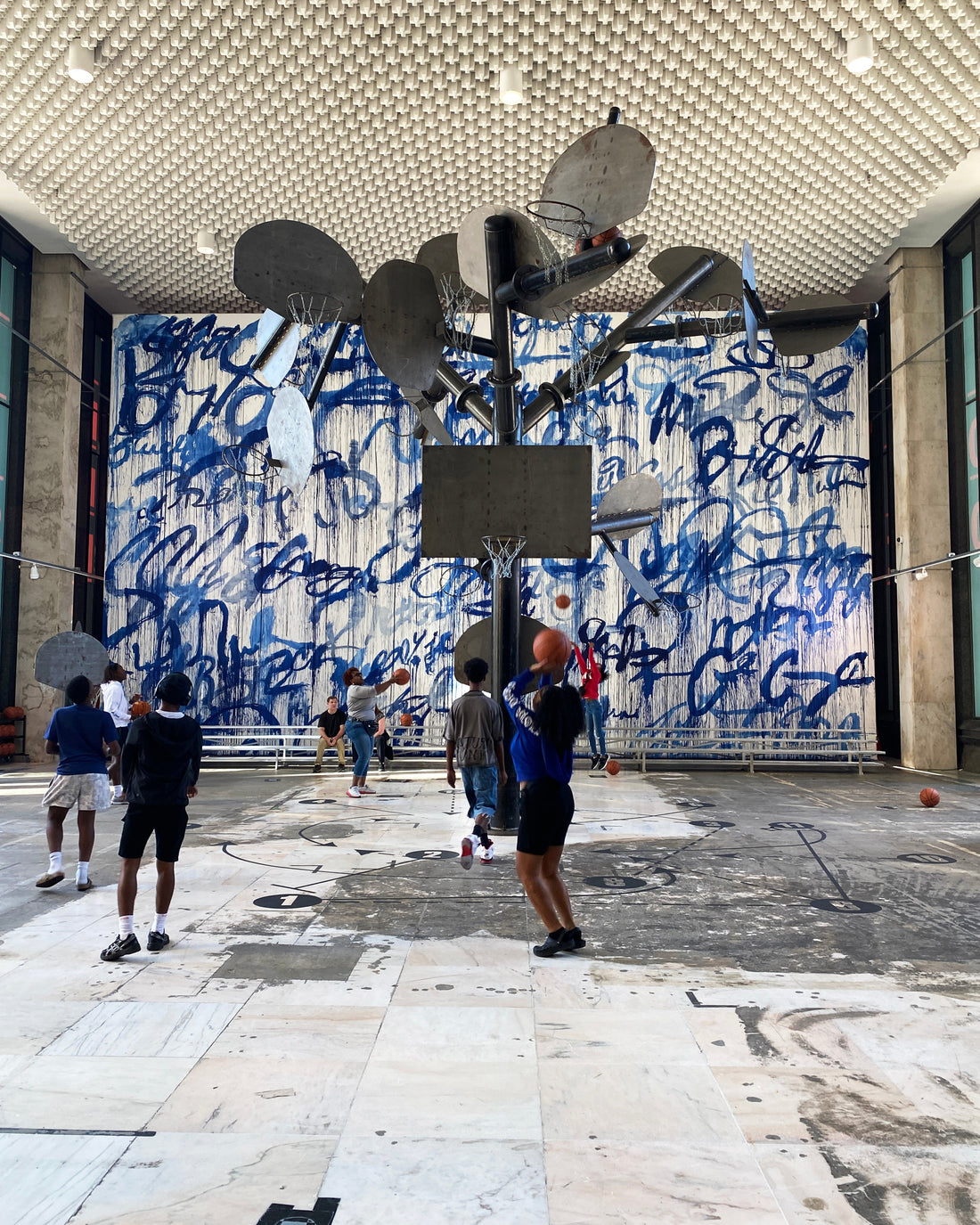The Court as Canvas: Finding Community in Tyrrell Winston's HORSE
Brandon Little
When art demands you play
Pencils down Sundays are a ritual I try to protect. Living just north of Detroit with kids and a startup consuming the week, I’ve learned that without boundaries, weekends vanish into chores or the studio. Detroit moves fast and if you don’t engage, you miss it.
So I’ve built a weekend rhythm for these sacred days: coffee and pastry at Warda Patisserie, while wandering the grounds of The Shepherd, and a pit stop at the Lantern. It keeps me connected to a city in constant transformation. But this Sunday wasn’t just about my Little Village routine, it was also about Tyrrell Winston’s HORSE.

Sculpture always pulls me in - artists like Ursula von Rydingsvard and Arnaldo Pomodoro come to mind. They create large-scale, analog works with an undeniable presence that draws you from afar. Then there are out-of-the-box furniture makers/sculptors like Erwan Bouroullec or Detroit’s own Chris Schanck, who blur the lines between object and function, creating that push-and-pull relationship with viewers through functional sculpture. Tyrrell Winston, though, hits differently, and HORSE is something really special.
At first glance, it’s sculpture and installation, building on a theme Tyrrell is known for—basketball. Central to the installation is a monumental, tree-like arrangement of raw metal basketball hoops that captivates and invites. This is offset by a massive, energy-filled wall of graphic interpretations of celebrity athletes’ signatures rendered in captivating indigo blue. But the moment you step into 1001 Woodward Ave, all critical distance collapses. You’re no longer an observer; you’re a player. Unlike Kapoor’s Cloud Gate or Calder’s La Grande Vitesse, this isn’t sculpture you simply revere and observe. It’s sculpture that pulls you in with a ball, a hoop, and a dare.

That collapse of boundary is where Winston’s genius lies. The tactile experience of leather basketballs, the audible rhythm of their bounce, the bong of the backboards, and the muscle memory of jump shots transcends demographics. Before you realize it, you are a part of something larger: strangers becoming friendly competitors, kids and adults taking ambitious shots, everyone sharing genuine smiles.
Detroit is the perfect stage for this work. The city has long been defined by communal sport, cultural resilience, and creative reinvention. HORSE exemplifies Detroit’s rebirth—a city rebuilding itself through community, sport, art, and our natural instinct to compete. In a place where plenty of contemporary art invites interaction, Winston does something different: he generates genuine community through play. As someone who has always craved touch in art and the transfer of energy from artist to object, HORSE goes further. The object isn’t the only medium; the entire social experience becomes the work.
HORSE operates simultaneously as sculpture, social experiment, and celebration. In an art world often criticized for exclusivity, this piece offers something radical: art that makes everyone an expert, simply by asking them to play.
On a Sunday meant for disconnection, I found something better: connection. HORSE collapses art, sport, and community into one act: PLAY. And for Detroit, for me, that’s exactly what pencils down is meant to create: a space where art doesn’t just reflect culture but actively builds it, one impossible shot at a time.
